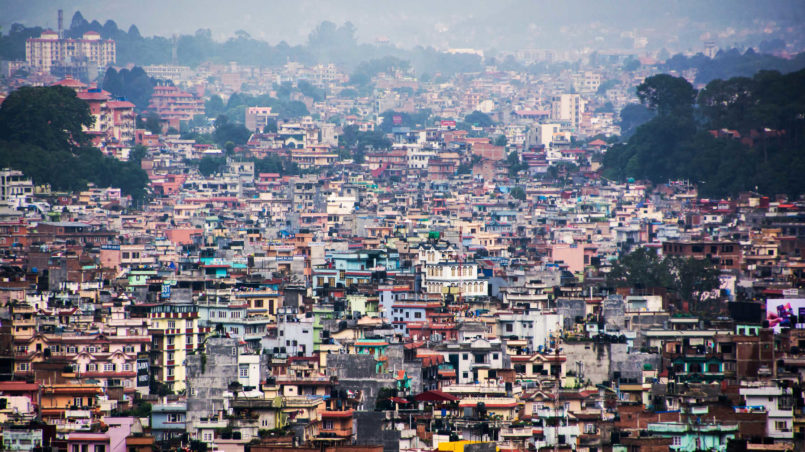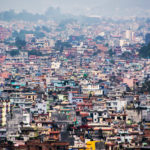Beautiful Kathmandu Faces Serious Air Pollution

Nowadays it’s been very difficult for us to walk through the streets of Kathmandu city. Everywhere around Kathmandu, we encounter very harmful dust. The trend is increasing day by day. I would like to take this opportunity to highlight some facts about air pollution in Kathmandu and the effects that it has.
Air pollution is one of the major problems in the Kathmandu Valley. The Numbeo database services listed Kathmandu as the third most polluted city in the world in early 2017. Usually, air pollution occurs due to green house, gas emissions, Particulate matters. and ozone. However, air pollution occurs due to traffic in the Kathmandu valley. Various unmanaged construction works are ongoing within Kathmandu city. They are also one of the major factors which cause air pollution.
There is a problem in monitoring the quality of the air in the Kathmandu valley. Without proper monitoring methods, plans cannot be made for preventive measures. There is no accurate data available, which makes it difficult to understand the relationship between emissions of pollutants and the impact on air quality. However, although air quality monitoring has been established in two places in the Kathmandu valley, this is not sufficient.
In Kathmandu city, there are not many open green spaces and any open space which existed has been taken over by construction works. A further difficulty is that the valley is surrounded by hills forming a bowl-shaped topography, which restricts wind movement and retains the pollutants in the atmosphere.
Hospitals are witnessing an increasing number of patients with respiratory infections. Dust particles suspended in the air from construction works and vehicular emissions are the key causes of the increasing cases of respiratory and other health problems related to air pollution in Kathmandu. Air pollution in Nepal is a major killer, causing more fatalities than road accidents that kill thousands of people every year,
(see statistics http://www.worldlifeexpectancy.com/country-health-profile/nepal)
One measure that could be taken would be to significantly reduce the number of diesel-based and old vehicles. Low emissions zones could also be declared in various important and polluted places in Kathmandu where private and high-emitting vehicles would be prohibited from entering. There is a need for major dust prone areas of the roads and tourist areas can be vacuum cleaner. Such devices can be bought immediately. Unpaved roads can be paved. If this is not possible, such roads could be covered with gravel to control the dust particles
A complete ban on solid wastes and burning of agricultural products could be implemented, with strict penalties imposed for non-compliance. All residents could start using cleaner fuels (e.g. liquefied petroleum gas (LPG)) and electricity instead of kerosene and diesel for cooking and lighting. Brick manufacturing could either be banned inside the valley or such industries could adopt air-purifying techniques, such as vertical shaft kilns, Hoffman kilns, and tunnel kilns for brick manufacturing to reduce sulfates, nitrates, and black carbon emissions.
In addition to these measures, one urgent measure could be a rotating one-weekday ban on the use of private vehicles. If despite this, pollution levels do not decrease, the ban could be extended to two or more days in a week. The production of diesel electricity could also be banned.
To reduce significant pollution from traffic, the construction of wider and paved roads with bicycle lanes could be prioritized. The infrastructure for electric vehicle routes and charging stations could be developed. A further measure could be the construction of tram routes and metro rail tracks as soon as possible. Large polluting industries, such as brick kilns, could be phased out to ensure good air quality. Some manufacturing processes with higher emissions could also be curtailed.
Despite air pollution, Kathmandu is a beautiful city. If air pollution is reduced, the city will not only be a more healthy place to live and visit but also more beautiful.
Credits
| Image | Title | Author | License |
|---|---|---|---|
 |
Kathmandu from Nagarjuna | Sharada Prasad CS | https://creativecommons.org/licenses/by/2.0/ |

great article and I think for air quality control we also need to raise sustainable.self.motivating factor to.the individuals residents of kathmandu so that they feel.ownership some kind of immediate benefit they need to.feel all the time as for example if in around bagmati areas if plantation and vegeatation done from where people get money benefit or foods as per their contribution then it might works involvement of every individuals is vital